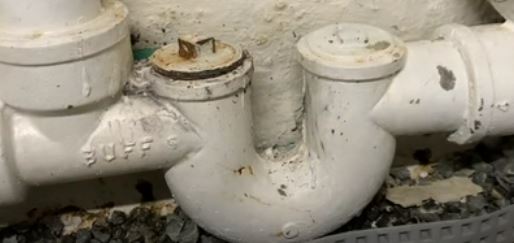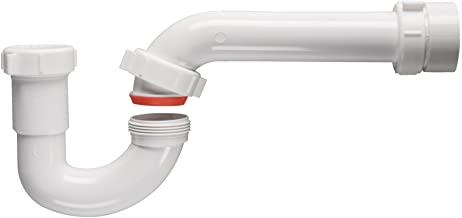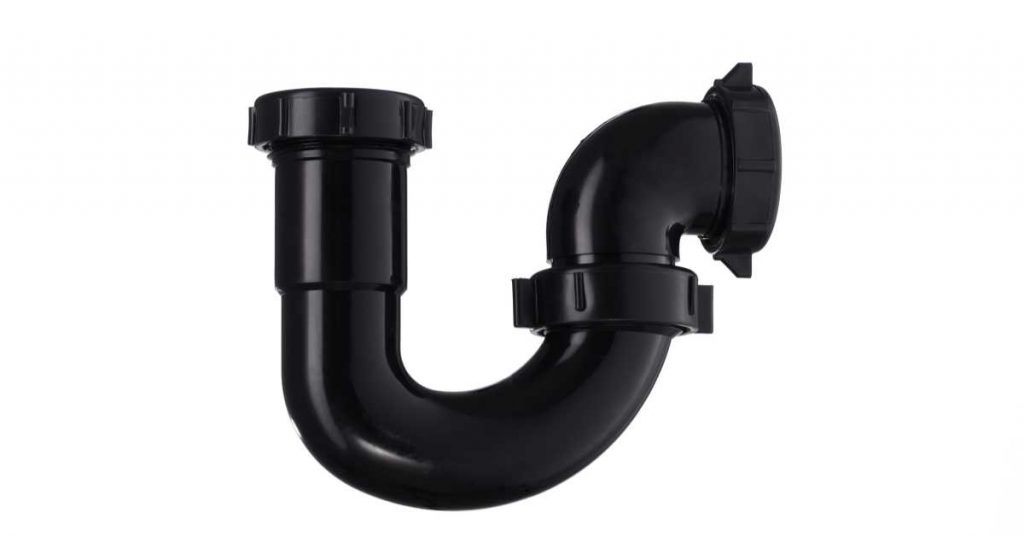
House traps, which are also known as plumbing or sewer traps are installed to prevent sewer gases from coming up to your house through fixture drains? Their shape (U-shape) allows them to hold water at all times which acts as a barrier for the sewer gases.
If you have been frequently experiencing slow drains, sewage backups, gurgling drains and a sewer smell in the house, a problematic sewer trap could be the problem. The best thing would to have a plumber remove it entirely provided your fixtures are vented and trapped properly.
The main problem with houses traps is that they corrode and therefore clog frequently, resulting in sewage backing up in the house. Their shape also makes them susceptible to clogs and also very hard to unclog or inspect which is why they are better off removed.
In modern plumbing, each fixture in your house (toilet, sink, tub, shower, washing machine) has a separate trap which means that sewer gases will not come into the house through them. It is therefore a good idea to remove the main house trap before it collapses or clogs resulting in sewage backups or leaks.
House traps stopped being used around 1990. It was discovered that the problem they were meant to solve (sewer gases) could better be addressed by properly venting the house, having a P-trap in every drain line and also having sewer cleanout.
Let us now look at house traps in more details and why one is not necessary in modern plumbing.
Why are House Traps Bad?

Plumbing is always evolving. The industry keeps discovering better and efficient methods of doing things which renders old features obsolete. One of those features is the house trap.
Apart from being obsolete, house traps can be dangerous to have and even expensive especially when you have sewage backing up in your house.
Let us start with why these fixtures were installed in houses in the first place.
You see, your sewer line is connected to the public sewer line at the street or to a septic tank if you are on a septic system. As you and I both know, sewage has a horrible smell and before house traps were a thing that smell would backup into your living space.
House traps were therefore designed to solve this problem. If you have an understanding of how your waste-drain-vent system works, you would know that all drain lines in your house are connected to the same sewer line in your yard which then drains out to the public sewer or septic tank.
House traps are installed underground on the main house drain line after all the fixtures’ drain lines have drained into it . The idea is to have the house trap serve all drain lines so that sewer gases won’t escape though any of them.
House traps are U-shaped. The inlet pipe drains near the top of the fist vertical pipe of the ‘U’ while the outlet pipe drains out at the top of the second vertical pipe.
As such, there is always water inside the house trap. When you flush a toilet or drain a sink, the wastewater goes down and then up through the trap and out into the sewer line.
The water inside the house traps works as a barrier preventing sewer gases from backing up in to your house. On paper, and when the house is relatively new, that system works very well.
Back in the day, sewer lines and therefore house traps were made from cast iron. The one thing we know about cast iron is that it corrodes despite it being a really strong metal.
When the pipe starts to corrode, its internal diameter is reduced and at the same time the interior becomes very rough. As a result, this creates a restriction for wastewater as it flows through it.
The shape of the house trap is also a problem. It is like taking a U-turn while driving. You have to bring your car to an almost stop.
That is the same thing which happens to wastewater as it flows through the house trap. Unlike water which is supplied under pressure, wastewater from your house flows out purely with the help of gravity.
This is why house traps are problematic as the house starts to age. You will keep unclogging it but it will clog again after just a few days and as you already know, plumbers are not cheap.
Although PVC pipes are currently being used as sewer lines, a PVC house trap is not ideal. PVC sewer pipes may be better than clay or cast iron but they will still clog and you will need to unclog them.
To unclog a sewer line, you need a powerful drain snake with sharp blades. Given the odd shape of the house trap, the blades will be in direct contact with the walls of the trap and are likely to punch a hole through it result in sewer leaks.
Should You Remove It?
When sewer traps were being installed in houses, fixtures’ drains did not have the P-traps they have today. Most if not all had S-traps, which are currently illegal.
But what is the difference between an S-trap and a P-trap?

A P-trap which is what you most likely have under your kitchen or bathroom sink is U-shaped, whereby the ‘U’ has a long leg and a short leg.
The long leg is connected to the sink drain opening while the short leg is connected to a horizontal section of the drain line using an elbow. That is very important in how P-traps work.

An S-trap as its name implies is S-shaped because it is made from a U-shaped bend and an n-shaped bend. The ‘S’ is then connected to a vertical drain line.
The main problem with S-traps which is the reason they are illegal today is that as the wastewater drains out, there is no room for air to flow back to the trap. This creates a vacuum in the vertical section of the drain line resulting in siphoning of the water from the S-trap.
With water siphoned out of the S-trap, sewer gases will then flow into the house without ant restriction.
That is not possible with a P-trap since air will still flow in as the trap drains and as such there will always be water inside the trap.
Are they Necessary Today?

If the drains in your house are fitted with a functional P-trap, I would say that having a house trap is no longer necessary. The P-traps will restrain sewer gases from entering your house and what is important is that these traps are easy to unclog or even replace when need be.
If you still have S-traps in your house, you can plan to bring in a plumber to replace them with P-traps and at the same time remove the sewer trap.
As you may already know, your main house drain line is connected to the plumbing vent which runs through the roof of the house. That is where sewer gases flow out through after being blocked by drain traps.
Plumbing vents also introduce air into the drainage system to help fixtures drain fast. If you have slow drains, weak flushing toilets and gurgling sounds from drains then you most likely have a clogged vent stack.
Another thing you can do as you remove your house trap is to install a sewer cleanout if do not have one already. A sewer cleanout helps you access the sewer line (for cleaning or inspection) instead of doing so from the trap, toilet drain or vent stack.
Some plumbers advice homeowners to replace their old house traps with double vent sewer traps, the advantage of the latter being that you can use it to access both the sewer line and the drain line back to the house.
If that is what you want, there are also such sewer cleanouts. The advantage of cleanouts over traps is that they do not create a restriction for the wastewater so you will have fewer clogs. Sewer cleanouts can also be made from PVC without any problems.
